 Despite surviving last year’s pre-Christmas BitTorrent blitz, the LokiTorrent site was finally closed down by a Dallas court yesterday.
Despite surviving last year’s pre-Christmas BitTorrent blitz, the LokiTorrent site was finally closed down by a Dallas court yesterday.
The Website’s operator, Edward Webber, put up a valiant fight, with its front page featuring a counter, detailing the amount of donations it had received towards its budget of $30,000 per month in legal fees.
The site’s homepage has now been replaced by a slightly distasteful back-slapping MPAA (The Motion Picture Association of America) notice boasting the caption, “You can click, but you can’t hide”.
It’s not unusual for file sharing sites to be closed down, but what’s really alarming file swappers, is that LokiTorrent has agreed to turn over the server’s user logs – and with over 750,000 registered users distributing more than 35,000 movies, songs and other items, this could leave thousands of users open to prosecution.
BitTorrent has become hugely popular in recent years because it can deliver large files faster than other file-sharing technologies. BitTorrent software has no built-in method for finding files, and users rely on tracker Websites such as LokiTorrent that act as directories.
These tracker sites compile links to digital goodies that are being shared online as “torrents,” the format used by the BitTorrent software. The links connect users to the Internet addresses of the people supplying copies of the file.
Although it’s notoriously difficult to trace users of swapping sites, the advent of broadband makes it considerably easier to track down heavy users, with a specific IP number often being associated with a particular connection for many months.
This latest prosecution is only part of MPAA’s aggressive anti-piracy strategy, with the company dishing out lawsuits like confetti. A second wave of lawsuits against BitTorrent tracker sites in the US has been announced, along with more lawsuits against individual file sharers.
They’ve also filed more notices asking Internet providers to shut down eDonkey servers on their networks and lawsuits against four Websites that sold file-sharing programs.
No matter how many lawyers get fat pursing piracy cases, it’s clear that they’re unlikely to put an end to the practice, with super-clever techie kids creating new technologies as soon as one becomes unworkable.
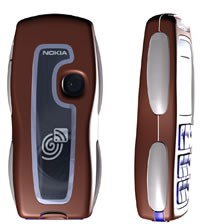 The world’s first Near Field Communications (NFC) product for payment and ticketing will be an enhanced version of the already announced Nokia NFC shell for Nokia 3220 phone.
The world’s first Near Field Communications (NFC) product for payment and ticketing will be an enhanced version of the already announced Nokia NFC shell for Nokia 3220 phone. The Independent Office of the Telecoms Adjudicator (OTA) has issued an update on their progress of ‘local loop unbundling’ (LLU – the process of opening BT’s exchanges to competitors).
The Independent Office of the Telecoms Adjudicator (OTA) has issued an update on their progress of ‘local loop unbundling’ (LLU – the process of opening BT’s exchanges to competitors).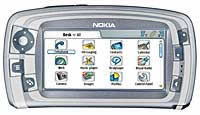 Nokia’s hotly awaited new multimedia smartphone, the
Nokia’s hotly awaited new multimedia smartphone, the  Depending on the sales package, some mobile media applications and services will be pre-installed on the 128 MB MMC, including Mobipocket Reader. This e-book reading application, already popular on Palm/Pocket PC platforms, gives the user access to thousands of titles including current bestsellers.
Depending on the sales package, some mobile media applications and services will be pre-installed on the 128 MB MMC, including Mobipocket Reader. This e-book reading application, already popular on Palm/Pocket PC platforms, gives the user access to thousands of titles including current bestsellers.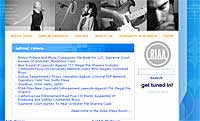 If they weren’t already unpopular enough with a large part of the online music file sharers, the Recording Industry Association of America (RIAA) has managed to score a spectacular PR own goal by suing a dead woman for swapping music files.
If they weren’t already unpopular enough with a large part of the online music file sharers, the Recording Industry Association of America (RIAA) has managed to score a spectacular PR own goal by suing a dead woman for swapping music files.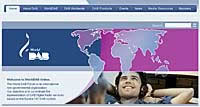 In an announcement apparently penned by a writer playing
In an announcement apparently penned by a writer playing 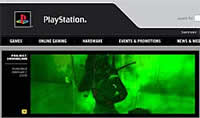 The details of the Cell processor chip designed to power
The details of the Cell processor chip designed to power  The Cell’s architecture is described as scalable from “small consumer devices to massive supercomputers” and when installed inside powerful computer servers, is expected to be capable of handling a breathtaking 16 trillion floating point operations, or calculations, every second. Phew!
The Cell’s architecture is described as scalable from “small consumer devices to massive supercomputers” and when installed inside powerful computer servers, is expected to be capable of handling a breathtaking 16 trillion floating point operations, or calculations, every second. Phew!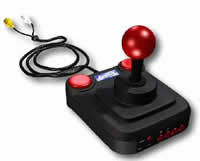 The most successful gaming computer of the 80s is back – this time in a teensy weensy new ‘Direct to TV’ (D2TV™) unit.
The most successful gaming computer of the 80s is back – this time in a teensy weensy new ‘Direct to TV’ (D2TV™) unit.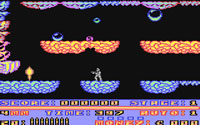 The DTV contains the classic games: Alleykat, California Games, Championship Wrestling, Cyberdyne Warrior, Cybernoid, Cybernoid II, Eliminator, Exolon, Firelord, Gateway to Apshai, Head the Ball, Impossible Mission, Impossible Mission 2, Jumpman Junior, Marauder, Maze Mania, Mission Impossibubble, Nebulus, Netherworld, Paradroid, Pitstop, Pitstop 2, Ranarama, Speedball, Summer Games, Super Cycle, Sword of Fargoal, Uridium, Winter Games and Zynaps.
The DTV contains the classic games: Alleykat, California Games, Championship Wrestling, Cyberdyne Warrior, Cybernoid, Cybernoid II, Eliminator, Exolon, Firelord, Gateway to Apshai, Head the Ball, Impossible Mission, Impossible Mission 2, Jumpman Junior, Marauder, Maze Mania, Mission Impossibubble, Nebulus, Netherworld, Paradroid, Pitstop, Pitstop 2, Ranarama, Speedball, Summer Games, Super Cycle, Sword of Fargoal, Uridium, Winter Games and Zynaps. Video streaming specialists,
Video streaming specialists,  The technology uses Forbidden’s ground breaking FORscene live compressor, that utilises advanced digital compression techniques to deliver a live video feed to PCs, Macs and laptops via the Web.
The technology uses Forbidden’s ground breaking FORscene live compressor, that utilises advanced digital compression techniques to deliver a live video feed to PCs, Macs and laptops via the Web.